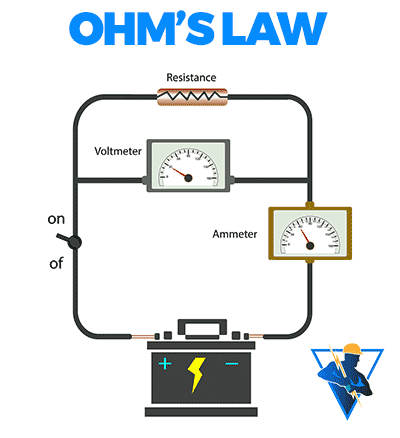 The term “difference of potential” refers to the voltage or electric potential difference between two points in an electrical circuit. It is also commonly known as voltage, electric potential, or voltage drop. The difference of potential is a measure of the electrical energy per unit charge between two points.
The term “difference of potential” refers to the voltage or electric potential difference between two points in an electrical circuit. It is also commonly known as voltage, electric potential, or voltage drop. The difference of potential is a measure of the electrical energy per unit charge between two points.
The concept can be understood by comparing it to the flow of water influenced by gravity. Imagine water flowing from a higher elevation to a lower elevation; the height difference creates a gravitational force that drives the water’s movement. Similarly, in an electric circuit, the difference of potential, or voltage, is like the height difference in our water analogy. It represents the force that drives the flow of electric charges (electrons) from a point of higher electric potential to a point of lower electric potential, much like water flows from a higher to a lower height due to gravity.
Here are some key points related to the difference of potential:
Voltage Definition:
Voltage, often denoted by the symbol “V,” is a measure of the electric potential energy per unit charge in an electrical circuit. It is measured in volts (V).
Potential Energy:
The difference of potential represents the potential energy difference between two points in a circuit. A higher voltage indicates a greater potential energy per unit charge.
Voltage Source:
In an electrical circuit, a voltage source (such as a battery or generator) creates a difference of potential between its terminals. Electrons flow from the point of higher potential (positive terminal) to the point of lower potential (negative terminal) in a closed circuit.
Voltage Drop:
As current flows through components in a circuit (such as resistors, capacitors, or inductors), there may be a voltage drop across these elements. The voltage drop is the difference of potential across a component due to its electrical resistance or reactance.
Ohm’s Law:
Ohm’s Law describes the relationship between voltage (V), current (I), and resistance (R): V = IR. This equation shows that the difference of potential across a component is equal to the product of the current flowing through it and its resistance.
Electrical Circuits:
In a circuit, the difference of potential influences the movement of electric charges (current). It determines the direction and rate of electron flow.
Ground Reference:
Often, one point in a circuit is considered as a reference point with zero potential, called the ground. The difference of potential between any other point and the ground is the voltage at that point.
Measuring Voltage:
Voltage can be measured using instruments such as voltmeters. Voltmeters are connected in parallel across the points between which the voltage is to be measured.
Final thoughts…
The concept of “difference of potential” is crucial for anyone working with energized equipment. It refers to the voltage or electric potential difference between two points in an electrical circuit, measuring the electrical energy per unit charge between these points.
Understanding voltage, potential energy, voltage sources, voltage drops, Ohm’s Law, electrical circuits, ground reference, and measuring voltage is essential for maintaining electrical circuits, determining the behavior of electric currents, and the operation of electrically powered devices.
Related articles:





